Renowned Speakers

Elizabeth G. Loboa
University of Missouri, USA
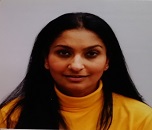
Manjit Kaur
National Human Genome Research Institute - NIH, USA

Kampon Sriwatanakul
Vitastem Co,ltd Thailand
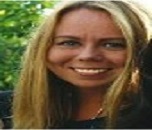
Irina I. Suvorova
Russian Academy of Sciences Russia

Hiltrud Brauch
Dr. Margarete Fischer Bosch-Institute of Clinical Pharmacology, Germany
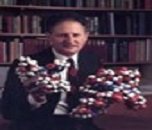
Henry M. Sobell
University of Rochester, USA

Haesu Ko
National Institute of Animal Science South Korea
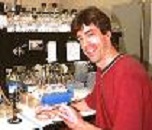
Gregg S. Pettis
Louisiana State University, USA
Recommended Global Materials Science Webinars & Conferences
Europe & UK
Asia Pacific & Middle East
Canada
Regenerative Medicine 2023
About Conference
Conference Series extends warm invitation to all the participants across the globe to attend 8th Global Congress on Tissue Engineering and Regenerative Medicine during December 04-05, 2023 in Vancouver , Canada
which includes prompt keynote presentations, Oral talks, Poster presentations and Exhibitions.
Regenerative Medicine 2018 is an unprecedented event designed for international medical health professionals and tissue scientists to facilitate the propagation and application of research findings related to the science of regeneration and all the associated research areas. The conference invites participants from universities, clinical research institutions and pharmaceutical companies to share their research experiences on all aspects of this rapidly expanding field and thereby, providing a showcase of the latest techniques.
Conference series organizes a conference series of 1000+ Global Events inclusive of 300+ Conferences, 500+ Upcoming and Previous Symposiums and Workshops in USA, Europe & Asia with support from 1000 more scientific societies and publishes 700+ Open access journals which contain over 30000 eminent personalities, reputed scientists as editorial board members.
Reasons to Attend
Edifying public with recent advances in tissue science and all the associated research areas from around the world, this is your single best opportunity to reach the largest congregation of participants. World-renowned speakers, the most recent techniques and the newest updates in Tissue science and all the associated research areas are pledges of this conference. Conferences, National symposium and Workshops provide a steadfast forum for the advancement, execution and exchange of information about the research done in the labs.
Who Can Attend?
Ø Tissue scientists
Ø Doctors
Ø Prosthetic surgeons
Ø Academicians
Ø Academic scientists
Ø Oncologist
Ø Industry professionals
Ø Diagnostic laboratory professionals
Ø Postgraduate students
Ø Postdoctoral fellows and Trainees
Ø Stem cell researchers.
Importance and Scope
With increase in the demand of organs and lack of supply of the same, scientists have been propelled to research more upon the science of regeneration so that this bridge between demand and supply is gapped. Tissue regeneration is a well-known phenomenon. This natural event has been utilized for regenerating lost parts of human being. Many advances have been taking place. With advent of regenerative medicine, the scenario has changed a lot. More over nanotechnology has added new dimension to the field of tissue engineering. Bio-printing of organs are also now possible with definite accuracy. These novel techniques can help mass to overcome the problems of lost organs. Many diseases can be cured. Regenerative Medicine 2023 aims to spread the inventions taking place inside the lab among more people. This will enable scientists to find answers they have been searching for. The business entrepreneurs can bring it to the market and the students can get inspired to learn more and work towards benefit of mankind. Today the market analysis of this field indicates that Government, private institutes and many others are investing more in this field as this has assuring future. The industrial output from the scientific developments in this filed are promising.
Scientific Session
Track 1:Tissue Regeneration
Many of us might have observed that the tail of a lizard, if cut, can grow efficiently all over again. This is an example of tissue regeneration. Like lizards, in many other animals including humans tissue regrowth can be observed. By definition it means that the regrowth of damaged or affected tissue from rest of the part. The initial step is rearrangement of pre-existing tissue followed by de-differentiation and trans-differentiation of the cells. This involves cells called stem cells which have the potential to regenerate themselves. There are intrinsic signals that activate stem cells to undergo regeneration when needed. There are amazing instances of tissue regeneration, For Example heart regeneration in zebra fish. In humans, liver cells can regenerate themselves. But there are many cells and tissue that lack this ability. To help humans fight tissue damages in a better way tissue regeneration needs immediate attention. Researchers across the globe should come together to unleash the mystery of the signals and genetics that trigger regeneration in some tissues.
i. Animal models of tissue regeneration
ii. Molecular fundamentals of regeneration
iii. Intrinsic Tissue regeneration
iv. Guided Tissue Regeneration
v. Human tissue regeneration: Challenges in In-Vivo and In-Vitro regeneration
vi. In silico Tissue engineering
Related Conferences: Regenerative Medicine Conferences | Tissue Engineering Conferences:
8th Global Congress on Tissue Engineering and Regenerative Medicine, December 04-05, 2023 Vancouver, Canada.
Track 2: Advent of Microfluidics
Scaffolds are important part of tissue engineering. For a material to be certified as biomaterial of interest we need to test its bio-compatibility and cytotoxicity. Traditional methods are time consuming and do not offer in vivo conditions. A recent technology called Microfluidic technology allows to study cells in in-vivo condition with control of the fluid supply. Micro and sub-micrometer microfluidic channels are developed in patterns that control the flow, mixing of solutions and supply of nutrients. Another approach is developing a lithographic technique to manufacture microfluidic structures enclosed in a calcium alginate hydrogel seeded with cells.
Related Association: Chinese Society for Biomaterials, China, Polish Society for Biomaterials, Poland, German Society for Biomaterials, Germany, Italian Society for Biomaterials, Italy.
Track 3: Regenerative Medicine: A Renaissance
Many people crave for organs at times of crisis. Lucky are those who get it on time. But the shortage of organ has been a recurrent problem throughout the world. In order to combat this problem, the concept of regenerative medicine has arrived. Regenerative medicine, by definition, means engineering cells, tissues and organs to restore normaly. The biomedical approaches in this field are administering bio-active molecules that will trigger regeneration, immunomodulation therapy, transplantation of organs grown in vitro etc.
i. Transplantation
ii. Bio-artificial organs
iii. Progenitor stem cells
iv. Three-dimensional (3D) printing
v. Cell Therapy
Related Conferences: Regenerative Medicine Conferences | Tissue Engineering Conferences:
8th Global Congress on Tissue Engineering and Regenerative Medicine December 04-05, 2023 Vancouver Canada.
Track 4: Medical Implants and Prosthetics
To restore damaged parts, certain devices or tissues are implanted inside or on the surface of the patient. These are called medical implants. These also include prosthetics which mean artificial body parts. Others have function like monitoring body functions, delivering medication or providing support to organs and tissues. Some implants are derived from body parts while others are fabricated using metals and alloys. These can be incorporated permanently or may be removed after certain time. Surgical implants have enough risks. They may induce allergies, swelling or other immunological problems. They may have chances to break and even cause internal damage. More research is being carried on to reduce the risk and use them for benefits:
i. Orthopedics
ii. Breast implants
iii. Dental implants
iv. Cosmetic implants
v. Contraceptive implants
vi Sensory and neurological implants
Related Conferences: Regenerative Medicine Conferences | Tissue Engineering Conferences:
8th Global Congress on Tissue Engineering and Regenerative Medicine December 04-05, 2023 Vancouver , Canada.
Track 5: Drug Delivery And Tissue Engineering
Drug delivery has received attention in the recent years because in most cases the drugs do not reach the target organs and fail to deliver the therapeutic action. So, several ways of drug delivery are being researched upon. Apart from traditional methods of drug delivery, there are several other methods like liposomes-mediated, microspheres-encapsulated, gels etc. Nano-encapsulated drug delivery is also receiving attention due to slow release, biocompatibility, target-oriented features etc.Tissue engineering relies on the use of scaffolds. For tissue regeneration growth factors are required. The delivery of these factors determines the success of the process. To address this, various drug delivery routes are researched upon and applied in tissue engineering techniques.
i. Controlled Release of drugs
ii. Growth Factor
Related Conferences: Regenerative Medicine Conferences | Tissue Engineering Conferences:
8th Global Congress on Tissue Engineering and Regenerative Medicine, December 04-05, 2023 Vancouver, Canada.
Track 6: Gene Therapy In Relation to Tissue Science
Gene therapy deals with gene incorporation to reverse the genetic error or cure it by replacing with normal gene. The gene delivery system are generally viral and non-viral vectors. There are some genes that code for bio-signal molecules to trigger the proliferation and differentiation of cells. These are supposed to play an important role in tissue engineering and induce tissue regeneration. Tissue regeneration with some plasmid DNAs of growth factor have cited their therapeutic ability. Advanced researches have reported about cationized gelatin microspheres that allowed the controlled release of plasmid DNA and has several advantages.
i. Viral and non-viral vectors
ii. In vivo gene therapy
iii. Ex vivo gene therapy
iv. Augmented gene therapy
v. Germline therapy
vi. Genetic engineering
vii. Somatic Gene therapy
viii. Recombinant DNA Technologies
ix. Immuno-therapy
Related Conferences: Regenerative Medicine Conferences | Tissue Engineering Conferences:
8th Global Congress on Tissue Engineering and Regenerative Medicine; December 04-05, 2023 Vancouver, Canada.
Track 7: Aesthetic Skin Rejuvenation
Aging is a natural and inevitable phenomenon. Skin loses its juvenile luster with age. Permanent pimples, wrinkles and texture irregularities are very common. With advent of cosmetic surgery this can be reversed. The process is generally based on layer by layer removal of the surface cells and the new cells are thus formed.
i. Cosmetic surgery
ii. Laser resurfacing of skin
iii. 3D skin rejuvenation
Track 8: Bio-Imaging
Biomedical imaging deals with capturing images for diagnostic and therapeutic purposes. Light (endoscopy, OCT), X-rays (CT scans), magnetism (MRI), radioactive pharmaceuticals (nuclear medicine: SPECT, PET) or sound (ultrasound) are the devices used to take snapshot of the current pathological condition of an organ or tissue. The need for biopsy has been eliminated with advent of optical molecular imaging technologies. Biomedical image processing includes the investigation, improvement and presentation of images captured via various imaging technologies
i. Molecular biophysics
ii. Fluoroscence imaging
iii. Flow cytometry
iv. Biomedical imaging modalities and data acquisition
v. Image reconstruction
Related Conferences: Regenerative Medicine Conferences | Tissue Engineering Conferences:
8th Global Congress on Tissue Engineering and Regenerative Medicine December 04-05, 2023 Vancouver, Canada.
Track 9: Biosensors
A hardware that interacts with a biological system to obtain a signal for diagnostic and therapeutic purposes is termed as a biosensor. Biomedical signal processing processes the data obtained using biosensors to be interpreted by us. Weak signals are generated by our body. They vary according to our pathological conditions. They can be captured by biosensors and calibrated with signals obtained under normal conditions. The difference will help us estimate the condition of the patient.
i. Biomedical Signal Processing
ii. Bio-Robotics
iii. Diagnostic & Therapeutic Systems
iv. Tele-Medicine
v. Wearable & Implantable Technologies
Related Conferences: Regenerative Medicine Conferences | Tissue Engineering Conferences:
8th Global Congress on Tissue Engineering and Regenerative Medicine, December 04-05, 2023 Vancouver, Canada.
Track 10: Scaffolds and Matrix for Tissue regeneration
In native state, majority of the cells (except the red blood cells) in our body are anchorage dependent and remain attached to a rigid support called extracellular matrix (ECM). It plays a key role in providing structural support to the cells and adds to the mechanical properties of tissues. It also helps the cells respond to the signals of micro-environment. Due to highly dynamic properties of ECM, it cannot be mimicked. But, scientists have developed biomaterials and biopolymers that can act as ECM and serve the similar functions in engineered tissues. The biomaterials should have some features like bioactivity, porosity, bio-compatibility etc. There are four scaffolding approaches as of now: 1) Pre-made porous scaffolds for cell seeding 2) Decellularized extracellular matrix for cell seeding 3) Confluent cells with secreted extracellular matrix 4) Confluent cells with secreted extracellular matrix. Preparation of scaffolds is a challenging task. Various approaches are Nano-fiber self-assembly, Solvent casting and particulate leaching, Gas foaming, Laser-assisted bio printing etc..
i. Cell seeding
ii. Hydrogels
iii. Cell encapsulation and microencapsulation
iv. Biopolymers
v. Biomaterials.
vi. Cell sheets
Related Conferences: Regenerative Medicine Conferences | Tissue Engineering Conferences.
8th Global Congress on Tissue Engineering and Regenerative Medicine, December 04-05, 2023 Vancouver, Canada.
Track 11: Bio-printing
An alternative to scaffold-based approaches in tissue-engineering is organ printing. With tissue spheroids as building blocks, 3d functional living macro-tissues and organ constructs are fabricated layer by layer using bio-robots. Three steps involved in organ printing are development of digital image of actual organ (pre-processing), organ printing layer by layer in 3d environment (processing) and finally perfusion of the printed part and its maturation (post processing). Numerous studies have cited the importance of bio printing in generating 3d structure of tissues and organs and it has added another dimension to tissue engineering.
i. Tissue spheroid
ii. Bio-printer
iii. Future prospects
iv. Challenges
Related Conferences: Regenerative Medicine Conferences | Tissue Engineering Conferences:
8th Global Congress on Tissue Engineering and Regenerative Medicine; December 04-05, 2023 Vancouver, Canada.
Track 12: Tissue Engineering In the World of Flora
With increasing success of animal tissue engineering, scientists are trying the techniques on plants. A very recent study reveals that Use of 3D scaffolds have helped in studying plant development. Nano-fiber scaffolds were expensive some days back. But with technique called shear spinning it has been rendered cost effective and hence can be used to experiment with plants. Reports have shown that by growing in the nano-fibres, they adopt dramatic change in their behavior. 3-D plant tissue engineering promises to provide a new array of techniques for studying plant growth and development in vitro. The agricultural sector will also be benefitted as synthetic biology can be researched upon.
Related association in USA: Society For Biomaterials, Canadian Biomaterials Society, The International Society of Biomedical Polymers and Polymeric Biomaterials (ISBPPB), World Biomaterials Congress, The American Institute for Medical and Biological Engineering (AIMBE), Tissue Engineering and Regenerative Medicine International Society.
Track 13: Legal and ethical Issues in Tissue Engineering
As every research should have a moral base, tissue engineering too stands on some code of ethics. As it entails use of body parts of living species, there are some ethical regulations that bind the researchers to think before making a leap. It entails “Right to integrity of a person”, “protection of personal data”, “solidarity”, “Private life and right to information” etc. Similarly there are some legal constraints on the research and application of tissue engineering. These ethical, legal and social implications of tissue science must be noted as they will form the foundation for the ultimate success of this engineering.
Related Associations: Australasian Society for Biomaterials and Tissue Engineering, Australia, The Korean Society for Biomaterials, Korea, Netherlands Society for Biomaterials and Tissue Engineering, Europe.
Track 14: Stem Cells: Culture, Differentiation and Transplantation
Stem Cells are undifferentiated cells that have the potency to regenerate and differentiate into cells of specific lineage. They are classified as oligopotent, pluripotent, totipotent cells based on the different types of cells formed after differentiation. The broader classification includes embryonic stem cells and adult stem cells. Mesenchymal stem cell (MSC) is a variant of adult stem cell that gives rise to osteoblast, adipocytes and chondrocytes. MSC transplantation for tissue engineering has grabbed attention due to its immunosuppressive features. It is now in use to regenerate tissues of kidney, liver, heart, bone etc. Stem cell culture forms the base for the tissue engineering approach. A minor change in the culture environment may lead to altered potency of the cells. So special reagents and media are required. Moreover, 3D culture techniques and CRISPR genome editing technology are also in market.
i. Cancer Stem Cells
ii. Mesenchymal Stem Cells
iii. Stem Cell Therapy
iv. Induced Pluripotent Stem cells (IPSC)
Related Conferences: Regenerative Medicine Conferences | Tissue Engineering Conferences
8th Global Congress on Tissue Engineering and Regenerative Medicine December 04-05, 2023 Vancouver, Canada.
Track 15: Grafts In Tissue Engineering
Grafts are the parts of tissue that have been transplanted via surgical methods. Diverse types of grafting include skin grafting, bone grafting, vascular grafting and ligament repair. Skin grafting is a commonly used grafting technique. Wounds, burns and scars have been dealt with this efficiently. Skin cancer also finds its remedy with skin transplantation. Bone transplantation is a bit difficult but well-known process to replace bone damages. In Recent years cardiovascular disease are being combatted with the development of a tissue-engineered vascular graft (TEVG). The various approaches to generate TEVGs are scaffold-based methods and tissue self-assembly processes. The channels for vascular grafting are autologous arteries or veins. Synthetic vascular grafts are also available in the market nowadays.
i. Wound healing and repair
ii. Bone replacement
iii. Cartilage replacement
iv. Hip replacement
Related Association: Netherlands Society For Biomaterials and Tissue Engineering, Swiss Society for Biomaterials + Regenerative medicine, Biomaterials and Tissue Engineering Society, UK Society For Biomaterials, Scandinavian Society for Biomaterials, TERMIS-EU (formerly European Tissue Engineering Society).
Track 16: Nanotechnology in Tissue Engineering
Nanotechnology has wide spread applications. It can be used to fabricate biocompatible scaffolds at the nanoscale. This would control the release of biological factors, to regulate cell behaviors and finally lead to the creation of functional tissues. Biocompatible materials at Nano-scale can be used as medical implants for example bone substitutes and dental restoratives. ECM is a highly dynamic matrix. Nano-topographic patterns on ECM control response of the living cells. Substrates with varying nano-features are being engineered so that cell function due to topographic cues can be controlled.
i. Nanotechnology
ii. Nanomedicine
iii. Nanotopography
iv. Nanofabricated scaffolds
Related Conferences: Regenerative Medicine Conferences | Tissue Engineering Conferences:
8th Global Congress on Tissue Engineering and Regenerative Medicine, December 04-05, 2023 Vancouver, Canada.
Track 17: Tissue engineering and Cancer
Cancer is the most dreaded disorder. The exact cause and mechanism is yet not known. Diverse research is going on find an answer. Tissue engineering has been inter-related with cancer to find some ways. Using tissue engineering to comprehend cancer can be done by fabricating 3D constructs that will mimic tumor cells and help us know how cancer cell grow, spread and metastasize at the biological level. For testing drugs, 3D structures are more reliable. One approach has been to engineer tumors and understand mechanism of drugs administered on then in vitro. Tissue engineered cancer models can be used as test therapies.
Related Societies: Swiss Society for Biomaterials + Regenerative medicine, Switzerland , Biomaterials and Tissue Engineering Society, Turkey, Romanian Society for Biomaterials, Romania , The Hellenic Society for Biomaterials, Greece, Japanese Society for Biomaterials, Japan.
Track 18: Osteoarthritis and Rheumatoid arthritis
Breakdown of joint cartilage and underlying bone causes Osteoarthritis (OA). The symptoms include joint pain, stiffness, joint swelling and decreased range of motion. With time, it affects joints of knees, hip and pelvic region. Rheumatoid arthritis (RA), on the other hand, is an autoimmune disorder that affects joints. It results in swelling of joints with intolerable pain. These diseases have been addressed with various approaches of tissue engineering and regenerative techniques. Positive results have been obtained.
i. Signs and symptoms
ii. Risk factors
iii. Pathophysiology
iv. Diagnosis
v. Prevention
vi. Management
vii. Prognosis
Related Conferences: Regenerative Medicine Conferences | Tissue Engineering Conferences:
8th Global Congress on Tissue Engineering and Regenerative Medicine, December 04-05, 2023 Vancouver, Canada.
Market Analysis
Tissue Engineering is an interdisciplinary field that applies the principles of engineering and life sciences toward the event of biological substitutes that restore, maintain, or improve tissue function or an entire organ. Regenerative medicine is not one discipline. It is often defined as a therapeutic intervention which “replaces or regenerates human cells, tissues or organs, to revive or establish normal function” and deploys small molecule drugs, biologics, medical devices and cell-based therapies.
Currently, it's emerged as a rapidly diversifying field with the potential to deal with the worldwide organ shortage issue and comprises of tissue regeneration and organ replacement. Regenerative medicine could potentially save public health bodies money by reducing the necessity for long-term care and reducing associated disorders, with potential benefits for the planet economy as an entire.
Importance & Scope:
A novel set of tissue replacement parts and implementation strategies had shown a superb revolution during this field. Cells placed on or within the tissue constructs is that the commonest methodology in tissue engineering.
This field continues to evolve. In addition to medical applications, non-therapeutic applications include using tissues as biosensors to detect biological or chemical threat agents and tissue chips which may be wont to test the toxicity of an experimental medication. Tissue Engineering and Regenerative Medicine is that the major field of drugs, which remains under research and therefore the advancements are maximizing day to day.
Regenerative Medicine 2022 is an engrossed a neighborhood of cognizant discussions on novel subjects like Scaffolds, Tissue Regeneration, Tissue engineering & 3D printing, Cord blood & Regenerative medicine, Bone & Cartilage Tissue engineering, Stem cells to battle cancer, Tissue bioreactors, Tissue chips & Biochips, Immunotherapy, Clinical medicine, to say a couple of . The three days event implants a firm relation of upcoming strategies within the field of Tissue Science & Regenerative Medicine with the scientific community. The conceptual and applicable knowledge shared, also will raise organizational collaborations to nurture scientific accelerations. We compile Researchers & Scientists, business, creative & technology leaders from the tissue engineering, marketing for the foremost current and relevant.
Why to attend???
Meet Your Target Market With members from round the world focused on learning about Advertising and marketing, this is often the only best opportunity to succeed in the most important assemblage of participants from the tissue engineering and regenerative medicine community. The three days event implants a firm relation of upcoming strategies within the field of Tissue Engineering & Regenerative Medicine with the scientific community. Conduct demonstrations, distribute information, meet with current and potential customers, make a splash with a replacement line , and receive name recognition.
The worldwide regenerative medication market is relied upon to reach USD 17.9 billion by 2025 from USD 8.5 billion out of 2020, at a CAGR of 15.9%. Market development is driven by the rising commonness of ongoing illnesses, hereditary problems, and malignancy; rising interests in regenerative medication research; and thus the developing pipeline of regenerative medication items. supported geology, Europe holds the second spot within the worldwide market within the sector of regenerative medication and tissue designing.
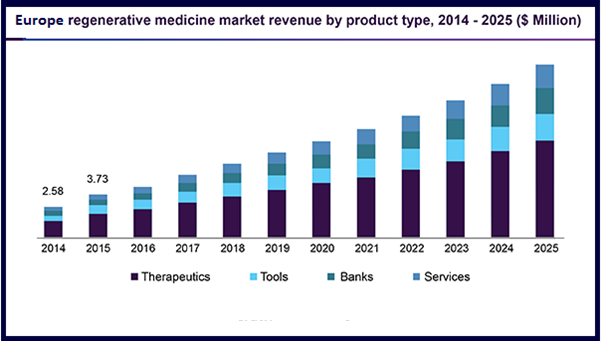
Today’s Market Study of Tissue Engineering and Regenerative Medicine in USA | Europe | Asia Pacific
- USA: Regenerative medicines market by therapy (cell therapy, gene therapy, immunotherapy, tissue engineering), region - global forecast to 2022, the worldwide regenerative medicines market size is predicted to succeed in USD 49.41 billion by 2022.
- Europe: the worldwide tissue engineering and regeneration market reached $17 billion in 2013. This market is predicted to grow to just about $20.8 billion in 2014 and $56.9 billion in 2022.
Asia-Pacific: Asia-Pacific regenerative medicines market is predicted to succeed in USD 10.71 billion by 2022 from USD 3.01 billion in 2016, growing at a CAGR of 28.90% during the forecast period 2016-2022.
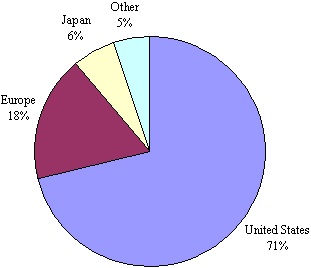
Major Regenerative Medicine and Tissue Engineering Associations around the Globe
- International Stem Cell Forum (ISCF)
- International Society for Stem Cell Research (ISSCR)
- UK Medical Research Council (MRC)
- Australian Stem Cell Center
- Canadian Institutes of Health Research (CIHR)
- Euro Stem Cell (ACR)
- Center for Stem Cell Biology
- Stem Cell Research Singapore
- UK National Stem Cell Network
Major Marketing Associations in Europe
- Spain Mobile Marketing Association
- European Marketing Confederation (EMC)
- European Letterbox Marketing Association (ELMA)
- European Sales & Marketing Association (ESMA)
- The Incentive Marketing Association (IMA Europe)
- European Marketing Academy.
Learn More
Regenerative Medicine Related Journals:
- Stem Cells
- Stem Cells and Development
- Stem Cells International
- Stem cells translational medicine
- Journal of Stem Cells
- International Journal of Stem Cells
- Journal of Stem Cells and Regenerative Medicine
- Calcified tissue research
- Calcified Tissue International
- Cell and Tissue Banking
- Cells Tissues Organs
- Cell and Tissue Biology
- Cell and Tissue Kinetics
- Cell and Tissue Research
- Cell Stem Cell
- Cellular and Molecular Biology Research
- Cellular and Molecular Immunology
- Cellular Physiology and Biochemistry
- Tissue Engineering and Regenerative Medicine
- Journal of Biomaterials and Tissue Engineering
- Journal of Clinical Rehabilitative Tissue Engineering Research
- Journal of Biomimetics, Biomaterials, and Tissue Engineering
Regenerative Medicine Related Hospitals:
- St. Catherine Specialty Hospital
- Kokilaben Dhirubhai Ambani Hospital
- Aspen Institute for Anti-Aging and Regenerative Medicine
- Cell and gene therapy catapult
- Nightingale hospital
- Great Ormond street hospital
- Indo-US Hospital
- USA Health University Hospital
- Central Alabama Veterans Health Care System West Campus
- Coosa Valley Medical Center
- Crestwood Medical Center
- Astria Regional Medical Center
- Dayton General Hospital
- Evergreen Health Monroe
- Kadlec Regional Medical Center
- MultiCare Allenmore Hospital
- Olympic Memorial Hospital
- Pullman Regional Hospital
- University of Pittsburgh Medical Center
Regenerative Medicine Related Universities:
- Johns Hopkins University
- Massachusetts Institute of Technology.
- Duke University
- Emory University-Georgia Institute of Technology.
- Stanford University.
- University of California--Berkeley.
- University of California--San Diego University of Pennsylvania.
- Case Western university
- Clemson university
- Colarando university
- Cornell university
- Drexel university
- Florida international university
- Harvard university
- George Washington university
Regenerative medicine Related Companies:
- Admedus
- 3-D Matrix
- Histogen
- Revotek
- Cerapedics
- Bio-Tissue
- NovaBone
- TissueTech
- Mega Biopharma
- EPISKIN
- Humeltis
- ACS-Biotech
- ROKIT
- BioAxone
- NIBEC
- Gel4Med
- Biostage
- Miromatrix
- Epithelix Sarl
- Novothelium
- DiscGenics
- Humacyte
- EpiBone
- Prellis Biologics
- Fesarius
- Cytex Therapeutics
- Indee Labs
- Orig3n
- Blue Rock Therapautics
- Rooster Bio
- Regeneus
- Integra life sciences
- Promethera biosciences
- Rubius Therapautics
Past Conference Report
Regenerative Medicine 2022
16th International Conference on Tissue Engineering & Regenerative Medicine was organized during February 21-22, 2022, Webinar. The conference was marked with the attendance of Editorial Board Members of supporting journals, Scientists, young and brilliant researchers, business delegates and talented student communities, who made this conference fruitful and productive.
This conference was based on the theme “Analyzing the Innovation & Future Trends in Regenerative Medicine” which included the following scientific tracks:
-
Tissue Regeneration
-
Advent of Microfluidics
-
Regenerative Medicine: A Renaissance
-
Medical Implants and Prosthetics
-
Drug Delivery and Tissue Engineering
-
Gene Therapy in Relation to Tissue Science
-
Aesthetic Skin Rejuvenation
-
Bio-Imaging
-
Biosensors
-
Scaffolds and Matrix for Tissue regeneration
-
Bio-printing
-
Tissue Engineering In the World of Flora
-
Legal and ethical Issues in Tissue Engineering
-
Stem Cells: Culture, Differentiation and Transplantation
-
Grafts in Tissue Engineering
-
Nanotechnology in Tissue Engineering
-
Tissue engineering and Cancer
-
Osteoarthritis and Rheumatoid arthritis
Conference Series LLC Ltd has taken the privilege of felicitating Regenerative Medicine 2022 Organizing Committee, Editorial Board Members and Keynote Speakers who supported for the success of this conference.
The esteemed guests, keynote speakers and researchers shared their innovative research and vast experience through their informative presentations at the podium of Regenerative Medicine 2022. We are glad to inform that all accepted abstracts for the conference have been published in our respective journal.
We are also obliged to various experts, company representatives and other eminent scientists who supported the conference by facilitating the discussion forums. We sincerely thank the Organizing Committee Members for their gracious presence, support, and assistance.
Let us meet again @ Regenerative Medicine Conferences
To Collaborate Scientific Professionals around the World
Conference Date December 04-05, 2023
For Sponsors & Exhibitors
Speaker Opportunity
Useful Links
Past Conference Report
Supported By
All accepted abstracts will be published in respective Conference Series International Journals.
Abstracts will be provided with Digital Object Identifier by




